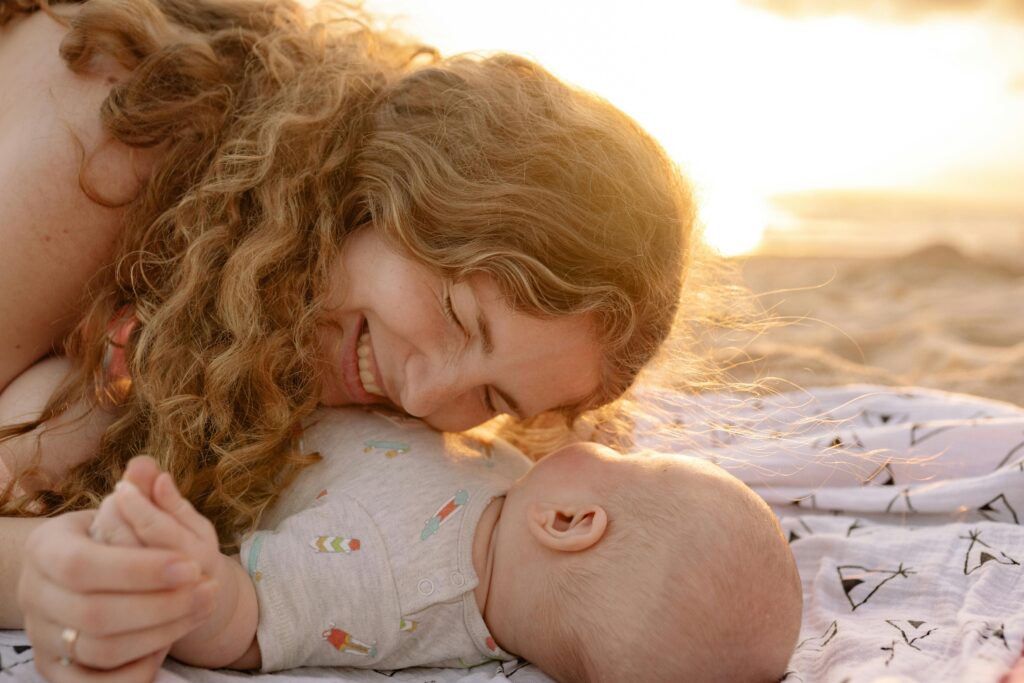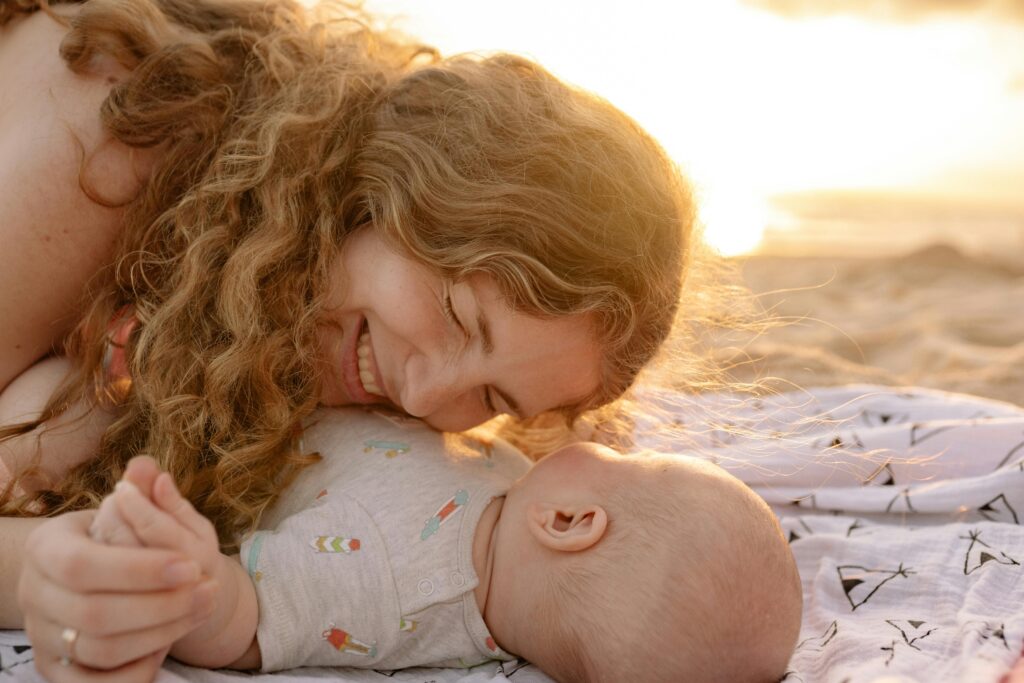Summer Breastfeeding: Keeping You & Your Baby Comfortable and Hydrated in Hot Weather
As the temperature rises and summer arrives in full force, many breastfeeding mothers find themselves with questions about how to adapt their feeding routines to the heat. Is your baby getting enough fluids? Why does their feeding pattern seem different? Do they need water in addition to breast milk? As a medical doctor and lactation consultant who has supported families through hot summer months, I’m here to guide you through everything you need to know about breastfeeding during the summer season.
How Heat Affects Breastfeeding Behaviour
Babies, like adults, can experience changes in their typical patterns when temperatures soar. Here’s what you might notice:
More Frequent, Shorter Feeds
During hot weather, many mothers report that their babies begin to feed more frequently but for shorter periods. This pattern resembles “cluster feeding” but is specifically related to the baby’s need for hydration rather than a growth spurt. Your baby may be taking smaller, more frequent “sips” throughout the day rather than longer, more substantial feeds.
This behaviour is completely normal and actually very intelligent—your baby is instinctively adapting to ensure they remain hydrated in the heat. These shorter, more frequent sessions allow them to take in the foremilk, which has a higher water content and helps maintain proper hydration.
Fussiness at the Breast
Some babies become fussier during feeds in hot weather. They might latch and unlatch repeatedly, seem restless, or pull away crying. This behaviour often occurs because:
• The close body contact generates additional heat
• Sweating between your body and your baby’s can create uncomfortable stickiness
• Your baby may feel generally uncomfortable in the heat, affecting their feeding behaviour
Night Feeding Increases
You might notice your baby feeding more during cooler nighttime hours. This pattern shift often occurs because:
1. The temperature drops, making close contact more comfortable
2. Babies may make up for any decreased daytime intake
3. The calm environment helps babies focus better on feeding
If your previously sleep-trained baby suddenly wants midnight feeds during a heatwave, this is often a temporary adjustment rather than a regression.
Adapting Your Breastfeeding Routine for Summer
Understanding these changes is the first step. Now let’s think about practical adaptations to make summer breastfeeding more comfortable for both you and your baby.
Finding Comfortable Feeding Positions
Traditional cradle holds can feel especially warm since they involve maximum skin-to-skin contact. Consider these alternatives:
• Side-lying position: Particularly helpful in hot weather as it minimizes body contact while still providing closeness
• Football hold: Keeps your baby’s body slightly separated from yours
• Laid-back breastfeeding: Allows air to circulate between your bodies
Creating a Comfortable Environment
• Set up feeding stations in the coolest areas of your home
• Use a small fan nearby (directed away from the baby) to improve air circulation
• Time outdoor activities and errands for cooler parts of the day
• Consider feeding before going outdoors, which helps ensure hydration before heat exposure
Managing Skin Discomforts
Heat rash and sweating can make breastfeeding uncomfortable. Try these solutions:
• Pat the breast and baby’s face dry before feeding
• Apply a thin muslin cloth between your body and baby’s to absorb moisture
• After feeding, allow your nipples to air dry completely
• Avoid applying creams in hot weather unless absolutely necessary, as they can trap heat
Breast Milk: Nature’s Perfect Summer Hydration
One of the most common questions I receive from mothers during summer is: “Should I give my baby water when it’s hot?” The simple answer is no—exclusive breastfeeding provides all the hydration your baby needs, even in hot weather.
Why Breast Milk Is Sufficient
Breast milk is approximately 88% water, making it perfectly designed to provide optimal hydration. What makes breast milk truly remarkable is its ability to adapt to changing conditions:
• Composition changes: Research has shown that during hot weather, the water content of breast milk may naturally increase slightly
• Temperature regulation: Breast milk contains components that help regulate your baby’s body temperature
• Electrolyte balance: Unlike plain water, breast milk provides the perfect balance of water, sugar, and salt that your baby needs for proper hydration
For exclusively breastfed babies under six months, additional water is not only unnecessary but potentially harmful, as it can:
• Disrupt the delicate electrolyte balance in young infants
• Fill the baby’s small stomach, reducing hunger and potentially decrease milk intake
• Dilute essential nutrients
• Reduce your milk supply by decreasing the frequency of feeds
When Additional Water May Be Appropriate
Once your baby begins solid foods (typically around 6 months), small amounts of water can be offered, particularly in hot weather. However, breast milk should remain the primary source of hydration throughout the first year.

Assessing Your Baby’s Hydration
In hot weather, being able to recognise the signs of proper hydration becomes especially important. Here are reliable indicators that your baby is getting enough fluids:
Signs of Good Hydration
• Regular wet diapers: At least 5-6 thoroughly wet disposable diapers (or 6-8 cloth diapers) in 24 hours
• Urine colour: Pale or clear urine indicates good hydration
• Soft fontanelle: The soft spot on your baby’s head should feel flat, not sunken
• Moist mouth and tongue: Your baby’s mouth should appear moist, not dry or sticky
• Tears when crying: Babies who are well-hydrated produce tears when crying
• Alert behaviour: A well-hydrated baby will have periods of alertness and normal activity
- Skin elasticity: When pinched gently, well-hydrated skin springs back quickly
Warning Signs of Dehydration
Contact your healthcare provider immediately if you notice:
• Significantly fewer wet diapers than usual (fewer than 4-5 in 24 hours)
• Dark yellow or amber coloured urine
• Dry mouth, lips, or tongue
• Sunken fontanelle (the soft spot on baby’s head)
• Unusual lethargy or extreme irritability
• No tears when crying
• Skin that remains “tented” when pinched gently
- Unusual drowsiness or difficulty waking
Caring for Yourself While Breastfeeding in Summer
Your own hydration and comfort are crucial components of successful summer breastfeeding. Remember:
Stay Well-Hydrated
Breastfeeding mothers need approximately 16 cups (128 ounces) of total fluid daily, and possibly more during hot weather. Signs that you may need to increase your fluid intake include:
• Dark urine
• Headaches
• Dry mouth
• Decreased milk supply
• Feeling unusually tired
Keep water bottles stationed throughout your home and drink regularly throughout the day. Many mothers find success with the habit of drinking a glass of water each time they sit down to breastfeed.
Nourish Your Body
Hot weather can suppress appetite, but adequate nutrition remains essential for milk production. Consider:
• Eating smaller, more frequent meals
• Incorporating hydrating foods like cucumbers, watermelon, and other fresh fruits
• Preparing cool meals that don’t require heating the house
- Keeping nutritious snacks readily available
Dress for Comfort
• Choose breathable, natural fabrics like cotton
• Consider nursing-specific summer clothes for easier access
• Wear a supportive but non-constrictive nursing bra made of breathable material
- Change breast pads frequently if you experience heavy leaking in the heat
Special Summer Breastfeeding Situations
Breastfeeding During Travel and Vacations
Summer can often mean family trips and vacations. Maintaining breastfeeding while travelling requires some preparation:
• Research your destination for breastfeeding-friendly locations
• Bring a lightweight nursing cover if you prefer privacy when feeding in public
• Consider a small portable fan for feeding comfort away from home
- Maintain your hydration diligently when travelling
Outdoor Activities and Events
Summer brings opportunities for outdoor gatherings, but these can present breastfeeding challenges:
• Scout for shaded, quieter areas where you can feed comfortably
• Bring a small spray bottle with water to refresh yourself and your baby
• Consider timing feeds before outdoor events
- Pack a cool bag with expressed milk if you anticipate being in situations where direct breastfeeding might be difficult
Conclusion
Breastfeeding during summer presents unique challenges, but with some adjustments, it can continue to be a beautiful, nurturing experience for both you and your baby. Remember that your breast milk provides perfect nutrition and hydration for your baby even in the hottest weather.
The key principles to remember are:
1. Expect and accept changes in feeding patterns during hot weather
2. Adapt your feeding environment and positions for maximum comfort
3. Trust that breast milk alone provides complete hydration for babies under six months
4. Monitor your baby’s hydration through wet diapers and general behaviour
5. Take care of your own hydration and comfort needs
Every summer brings its challenges, but it also passes quickly. With these strategies in place, you and your baby can navigate the hot weather while maintaining a strong breastfeeding relationship. As always, if you have concerns about your baby’s feeding or hydration, don’t hesitate to reach out to your healthcare provider or lactation consultant for personalised support.
Note: This article provides general guidance and is not intended to replace personalised medical advice. Always consult with your healthcare provider regarding your specific situation.

